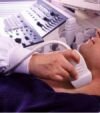

Home > About The Study
Get Involved!
AdDIT needs your help to improve the future of young people with diabetes.
To join AdDIT you will need to have been taking part in one of the screening studies which have been set up.
In Australia, young people who are volunteering for the MA screening study in centres around Adelaide, Brisbane, Melbourne, Perth, and Sydney may be invited to join AdDIT.
If you are volunteering for the MA study at Sickkids in Toronto, Canada you may be invited to join AdDIT.
In the UK, young people who are volunteering for the Nephropathy Family Study (NFS) in centres around Birmingham, Bristol, Cambridge, Manchester, Newcastle and Oxford, may also be asked to join AdDIT.
What happens in the screening studies?
Volunteers are asked to give two sets of 3 early morning urine samples to test for protein and at their yearly clinic review they are asked for a little extra blood so that HbA1c can be checked. In the UK, parents of participants are also asked for a blood sample to check for blood fats and to look at DNA as researchers there are also looking at whether genes have a part to play.
So far 2370 young people and their parents have joined the screening studies which are now in their final phase. More volunteers are still needed.
Our target is 4500 young people to join. If you would like to be involved please talk to your hospital doctor or ask your diabetes nurse. Otherwise, follow the relevant link to find a study site near you…
What is the research about?
Young people diagnosed with type 1 diabetes during childhood are at risk of long term complications including kidney, heart and circulatory disease which may reduce life expectancy by 10-15 years. This risk can be reduced by improving glycaemic control (HbA1c) but this can be difficult to achieve, particularly during adolescence. More and more, adults who are at higher risk for complications, are being given drugs such as the blood pressure lowering drugs, Angiotensin converting enzyme inhibitors (ACEIs) and blood fat (lipid) lowering drugs (statins) to prevent complications. However there is no evidence at the moment as to whether these drugs will be effective in adolescents with diabetes.
The aim of AdDIT is to find out whether ACEIs and statins have a place in the treatment of adolescents with diabetes.
How will it benefit people affected by diabetes?
We cannot be sure if the study drugs will benefit anyone directly, but the information we get from AdDIT will help make decisions about how best to treat young people with diabetes in the future.
This is the first major study of these medications in adolescents with type 1 diabetes. It will provide important information about how safe it is to give adolescents ACEI and Statins, and whether or not they can help in the short term to limit increases in blood pressure and blood fats. This information will be valuable to the authorities responsible for licensing these drugs for future use in the population.
When combined with insulin therapy, use of these drugs during adolescence could significantly reduce the overall numbers of young people with type 1 diabetes who develop long term complications.
Cardio-vascular Assessments
AdDIT participants will be asked to have 3 tests to assess the health of their arteries. The tests will use ultrasound (the same type of scanner that doctors use to check the development of a baby during pregnancy) and a procedure known as applanation tonometry. There will be no needles or any other procedures that could be painful.
The assessments will include a measurement of carotid arterial intima medial thickness (cIMT), Pulse Wave Velocity (PWV) and Flow Mediated Dilatation (FMD), (PWV and FMD are carried out where facilities allow).
cIMT - For this test, (shown in picture below) we will perform an ultrasound scan of the main artery of the neck, the carotid artery. This will allow us to measure the thickness of the artery wall and will take approximately 20 minutes to perform.

PWV – This test is used to measure the speed of blood flow around the body and provides an estimate of stiffness of the blood vessels. The test involves measuring the pulse at both the carotid artery and femoral artery (on the upper leg) from which we can then calculate how fast the pulse is travelling.
FMD - An ultrasound probe will be used to measure the diameter of the main blood vessel in the upper arm (the brachial artery). The aim of the test is to measure the change in the diameter of the brachial artery due to an increase in blood flow. The increase in blood flow is achieved by pumping up a blood pressure cuff placed around the forearm for 5 minutes.
These tests will provide important information by characterising blood vessel structure and function in young people with T1D which in turn will be helpful in deciding whether someone with diabetes could develop heart or kidney problems later on in life.







